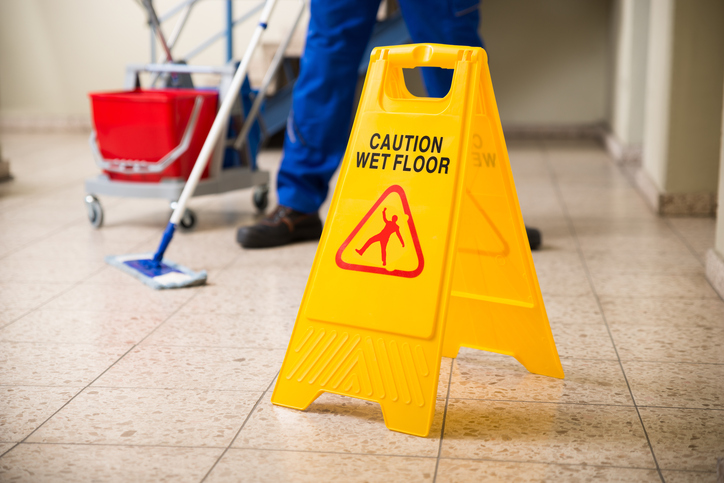A safe workplace can help make for a more successful business. Not only do safety guidelines help keep your employees safe, but they also save you from having to deal with costly workers’ compensation claims. Additionally, when you make it a point to value safety, you gain a reputation for caring about your employees, which can help boost your recruitment and retention efforts.
Aside from these apparent benefits, workplace safety programs provide many perks you might not necessarily consider. From increased productivity to reduced environmental impact, there are many advantages to creating a safe workplace.
What Is A Workplace Safety Program?
A workplace safety program is a set of practices and procedures designed to keep employees safe and healthy on the job. It’s not just about following regulations (although that’s important too!), it’s about creating a culture of safety where everyone is committed to preventing accidents and illnesses.
Critical elements of a successful workplace safety program include:
- Management leadership: Management sets the tone for safety in the workplace. This means being visible, involved, and committed to safety.
- Worker participation: Employees should be involved in identifying hazards, developing safety procedures, and reporting unsafe conditions.
- Hazard identification and control: The program should regularly identify, assess, and control potential hazards in the workplace.
- Education and training: Provide your team with training on hazards, safe work practices, and personal protective equipment (PPE).
- Program evaluation and improvement: You should regularly evaluate your policies to ensure they are up-to-date and identify areas for improvement.
- Communication and coordination: There should be clear communication about safety expectations and procedures. This includes communication between employees, managers, and any contractors or temporary workers.
Unexpected Benefits Of Workplace Safety Programs
The primary function of workplace safety programs is to prevent accidents, injuries, and occupational hazards. However, beyond its primary goal, these programs can bring several other benefits, including the following:
Better retention rates
When you implement a workplace safety program, you’re working toward creating a better environment for your employees. The Society for Human Resource Management (SHRM) found that employees of businesses who prioritized health and safety were four times more likely to report job satisfaction. A safe workplace is a happy workplace that retains employees year after year.
Enhanced organizational reputation
A robust workplace safety program reflects positively on your reputation. Businesses known for prioritizing safety are perceived as responsible and caring employers. This reputation can attract top talent, improve customer trust, and strengthen relationships with stakeholders, including investors and regulatory bodies.
Reduced costs and increased efficiency
You may know that workplace safety programs are a sound financial decision, but how much money can it save? One study found that facilities in California that had been inspected by California’s Occupational Health and Safety Department saw 26% average cost savings on workers’ compensation following an inspection compared to similar uninspected workplaces.
While the initial investment in safety equipment and training may seem costly, it often leads to significant cost savings over time. Fewer workplace accidents mean lower expenses for workers’ compensation claims, medical costs, insurance premiums, and potential legal fees. Moreover, a safer work environment tends to be more efficient, with fewer disruptions due to accidents or absenteeism.
Compliance with regulatory requirements
Implementing a comprehensive safety program ensures compliance with health and safety regulations set forth by governmental agencies. Meeting regulatory requirements not only avoids fines and penalties but also establishes a framework for best practices in workplace safety.
Improved quality of work
A good safety program can keep your employees healthy, but did you know they can also make them more productive? Businesses experienced a 43 percent increase in productivity from employees who followed a workplace safety program, meaning that the program not only helped keep employees safe but also made them work more efficiently than before.
Why? Employees who aren’t worried about safety hazards are better able to focus on their tasks, leading to higher-quality products or services. Reduced accidents and errors contribute to smoother operations and better customer satisfaction.
Enhanced teamwork and communication
Safety programs often promote teamwork and open communication among employees. Safety training sessions and regular safety meetings allow workers to interact, share concerns, and collaborate on safety initiatives. This improved communication can extend beyond safety issues and positively impact overall teamwork and collaboration within the organization.
Innovation and continuous improvement
Safety programs encourage a culture of innovation and continuous improvement. Employees and managers actively involved in safety initiatives often identify opportunities for process improvements and technological advancements that not only enhance safety but also increase efficiency and reduce costs.
Reduced environmental impact
Many workplace safety programs include initiatives that reduce operations’ environmental impact. Implementing energy-efficient practices, reducing waste, and using safer chemicals or materials can contribute to sustainability goals and demonstrate corporate responsibility.
Better emergency preparedness
Safety programs often incorporate emergency preparedness and response plans. Employees trained in emergency procedures are better equipped to handle unexpected situations such as fires, natural disasters, or medical emergencies. This preparedness can save lives and minimize property damage during critical incidents.
Long-term business sustainability
Ultimately, a commitment to workplace safety contributes to the long-term sustainability of the business. By protecting employees, minimizing risks, and fostering a positive work environment, you can build resilience against external challenges and position your business for continued success in the marketplace.
Start Your Own Workplace Safety Program
Workplace safety programs offer more than just protection against accidents—they promote employee well-being, enhance organizational reputation, improve efficiency, and contribute to overall business success. Investing in safety is a legal and moral obligation and a strategic decision that pays dividends in numerous ways.
Don’t wait to institute a workplace safety program for your business. Contact Group Management Services today, and we will help you see the benefits of a safer workplace for your business.









